‘A canvas for black artistry’: Miami exhibit celebrates Harlem Renaissance literature and art
- Oops!Something went wrong.Please try again later.
- Oops!Something went wrong.Please try again later.
- Oops!Something went wrong.Please try again later.
- Oops!Something went wrong.Please try again later.
Most people just see the sphinx. Then they notice the circles looped onto the sphinx’s backside, connecting it to an inexplicable J shape. Then the eye moves up to the name of a 1920s magazine: “FIRE!! Devoted to Younger Negro Artists.”
The bold, blown up magazine cover is the first artwork that visitors see when the elevator doors open to The Wolfsonian - FIU museum’s seventh floor. On a recent tour, Miami-based art curator Chris Norwood pointed out what most people miss. The sphinx is an earring. The J is an ear. The random pattern on the artwork’s border is actually a Black woman’s profile.
Once you notice the woman’s face, that’s all you see.
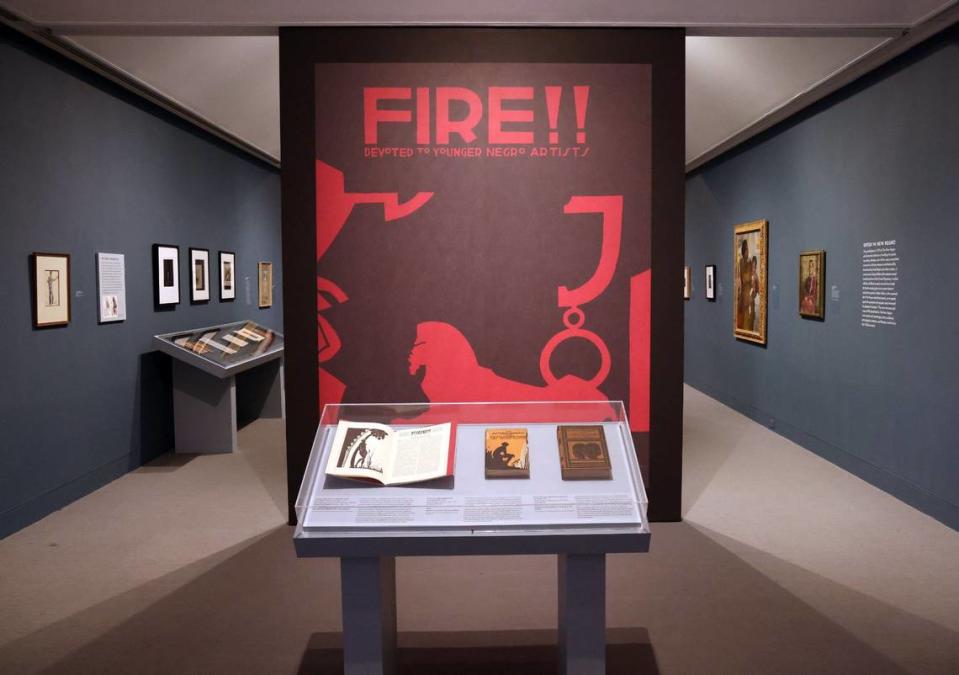
Norwood was intentional when he chose this wall-sized image to welcome people into the world of “Silhouettes: Image and Word in the Harlem Renaissance,” a sprawling exhibition celebrating the 100 year anniversary of the start of the Harlem Renaissance at The Wolfsonian on South Beach. The show, up since November, closes on June 23.
“It’s a really interesting metaphor because we’re so drawn into the middle, that we don’t focus on the outliers,” Norwood said of the FIRE!! magazine cover. “We’re always sucked into the middle of things that we don’t see the bigger picture sometimes. It just really just exemplifies the idea of blackness being this bigger picture.”
“Silhouettes” highlights the beauty of book and magazine covers — often illustrated in the style of silhouettes — with the same reverence of paintings and sculptures. The show is all about the storied collaborations between some of the greatest minds, visual artists and authors working between the 1920s and ‘40s, when African-American art, literature and music flourished.
Today, we refer to that era as the Harlem Renaissance. At the time, author Alain Locke dubbed it as The New Negro Movement.
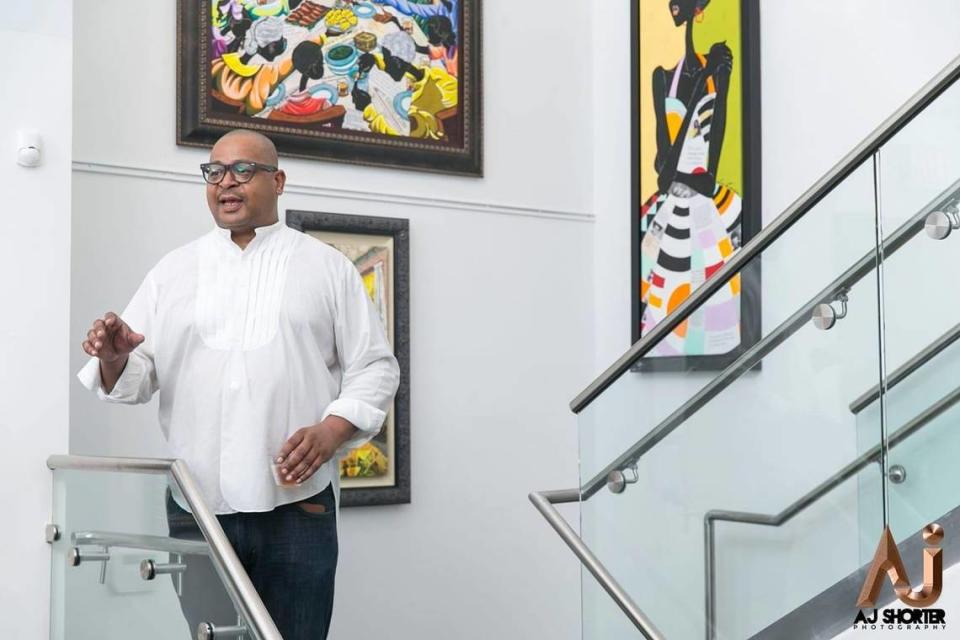
Norwood worked closely with FIU English professor Shawn Christian on the show, which pulls from The Wolfsonian’s own collection of first edition Harlem Renaissance books. The exhibition also features loaned art from N’Namdi Contemporary, Fisk University Galleries, the Archives at Florida Memorial University, Norwood’s collection, Hampton Art Lovers, Kenkeleba Gallery, Norton Museum of Art, Beth Rudin DeWoody and the family of Harlem Renaissance artist Aaron Douglas.
Douglas illustrated the artwork gracing the cover and pages of FIRE!!, a short-lived magazine with an ironic name. After its first and only issue was published, its offices burned down.
But that single issue was enough to make an impact, Norwood said. It was radical, with stories on street life and prostitution in New York City. Writers like Langston Hughes and Zora Neale Hurston contributed to the magazine — and went on to contribute even more to American culture.
‘People felt more free’
It all started with the urge to rip out pages from a book.
A few years ago, Norwood, a collector and gallerist, acquired an original copy of “One-Way Ticket,” a book of poems written by Langston Hughes with illustrations by Jacob Lawrence, from an auction. The poems and artwork were inspired by The Great Migration, when 6 million African Americans migrated from the South to the North from 1910 to 1970. The illustrations in Norwood’s copy are signed by Lawrence himself.
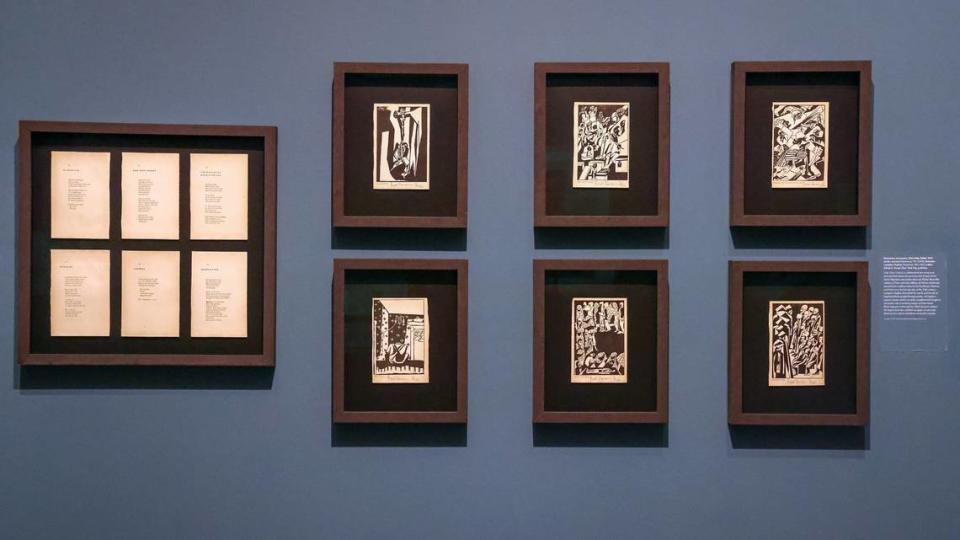
Each illustration accompanies a poem. There’s one about the blues, a funeral, a graduation and buying a one-way ticket to anywhere but the South. “I am fed up With Jim Crow laws, People who are cruel, And afraid,” Hughes wrote.
Admittedly, Norwood isn’t a literature expert, but he knows how to appreciate art. He carefully tore out each poem and illustration to frame them. Now they’re displayed side-by-side in the exhibition.
“That relationship [with writers] allowed these artists who could not be seen in galleries and museums around the world to now have a vehicle to do that,” Norwood said.
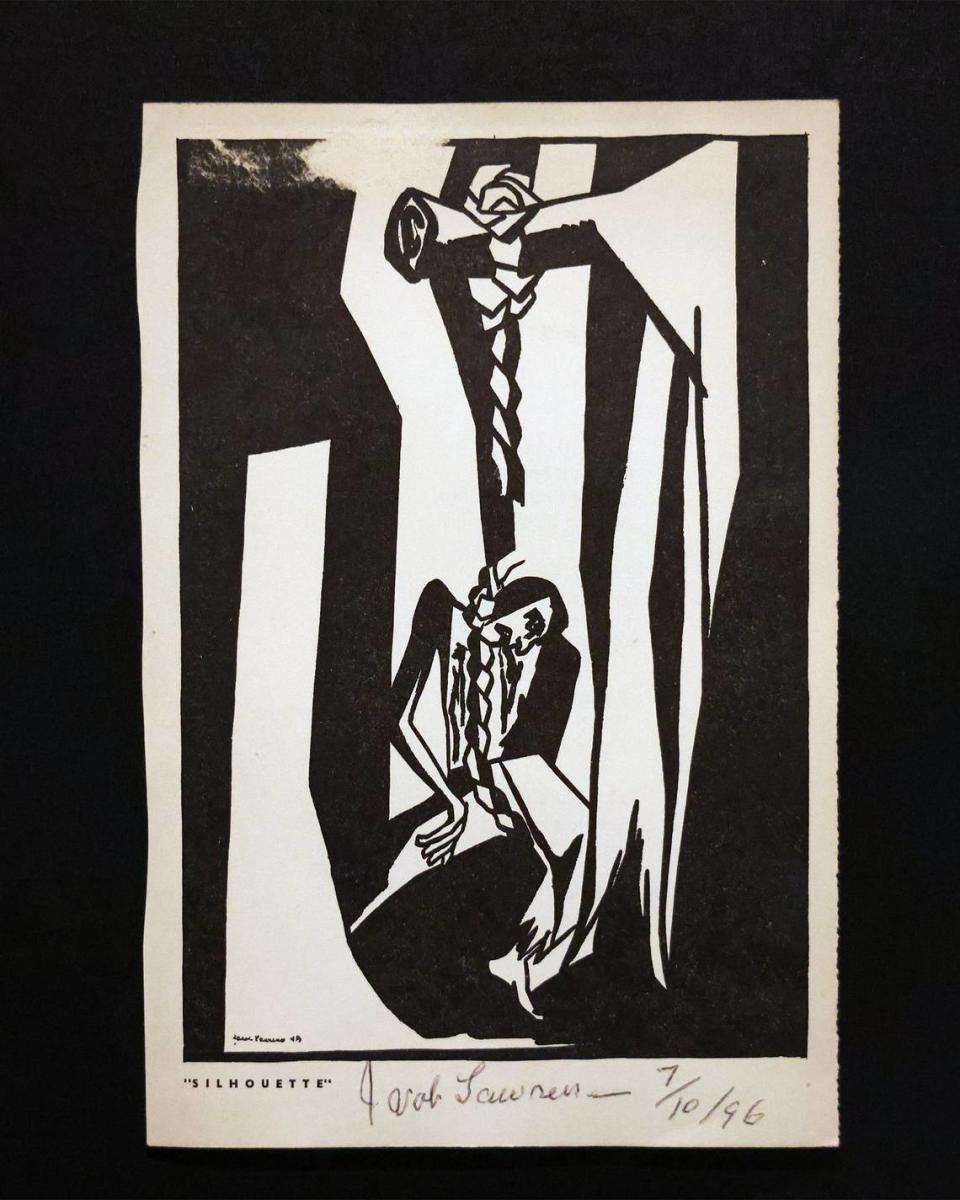
The exhibition is a treasure trove of history. Take James Weldon Johnson, a recurring character in the show and a true Renaissance man.
Born in 1871 in Jacksonville, Johnson was a prolific author, a musical theater song writer, a U.S. diplomat in Latin America under the Roosevelt administration, the first Black man to sit for the Florida bar and the first executive director of the NAACP.
And, Norwood almost forgot to mention, Johnson is best known for writing “Lift Every Voice and Sing,” a song known today as the Black national anthem. He wrote it as a poem, and his brother composed the music. Johnson was the principal of the school where a choir of children first performed the song in Jacksonville to celebrate Lincoln’s birthday. Johnson and his brother moved to New York City, where they wrote hundreds of songs for musicals, Norwood said. In his absence, the song spread through the South, resonating with Black children. The song was later adopted by the NAACP.
“What I’ve learned, at the end of the day, is that James Weldon Johnson was even more amazing than I thought he was,” Norwood said.
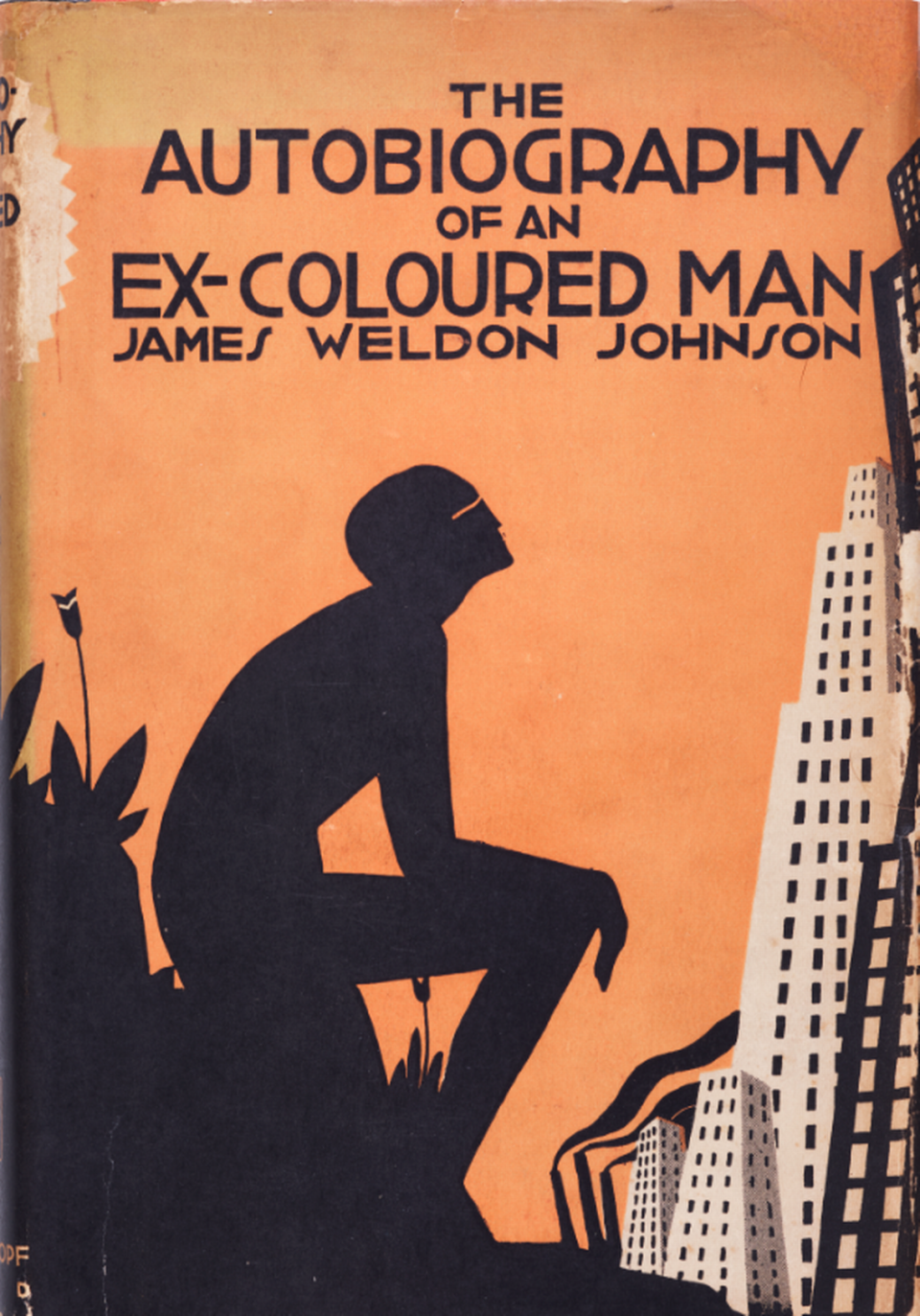
In the first vitrine of books in the exhibition, sitting next to FIRE!!, is Johnson’s book “The Autobiography of an Ex-Coloured Man.” The burnt orange cover art, also by Douglas, shows the silhouette of a Black man sitting in nature looking up at the skyline of a big city and “grappling with this new modern era,” Norwood explained.
Johnson wrote and published the book anonymously in 1912. But during the Harlem Renaissance, he reprinted it with his name on the cover.
“People felt more free,” Norwood said. “He literally didn’t feel comfortable writing this book under his own name 10, 15 years prior.”
Portraits and protests
Norwood’s history lesson continued as he walked into a section of the show dedicated to portraits. “The Bible of the Harlem Renaissance,” he said, is Alain Locke’s book, ‘The New Negro.’ Locke was a philosopher, author and “the godfather of the Harlem Renaissance.”
This quote from Locke’s book is printed on the wall: “Whoever wishes to see the Negro in his essential traits, in the full perspective of his achievement and possibilities, must seek the enlightenment of that self-portraiture which the present developments of Negro culture are offering.”
“In today’s world, we all think we’re so important, we do selfies all the time,” Norwood said. “During this time period, the idea that Black people were worthy of portraits was something revolutionary.”
Norwood pointed to a portrait by German artist Winold Reiss of a young man dressed in a sharp gray suit named Harold Jackman, who “exemplified what this New Negro was,” Norwood said. Jackman was a New York University graduate, a model, a public school teacher, an art advocate and “the best looking Black man in Harlem.” (It’s hard to argue. This man was ridiculously handsome.)
Portraits appear throughout the show; images of good-looking, well-dressed, well-to-do, successful Black Americans captured through photography, paint, pastels and sculpture.
In a Wolfsonian-owned painting called “Harlem,” a distinguished woman in a mustard dress balances a baby on her hip. Nearby is a pensive portrait of Zora Neale Hurston, drawn by Reiss. Another gallery displays black-and-white photographs of legendary Harlem Renaissance entertainers like Billie Holiday and Ella Fitzgerald.
In another painting, Grace Goens, Douglas’ favorite cousin, sits for a portrait in an eggplant dress. Across the gallery, is another portrait Douglas made, a watercolor painting of a baby girl, Goens’ niece. “That is the person who actually loaned us this work,” Norwood said.
In another exhibition section about racial uplift is a portrait Douglas painted of singer Marian Anderson the year after she became a civil rights icon. In 1939, Howard University invited her to perform at a large Washington, DC venue, but the venue owners refused to let her sing. Public outcry over the ordeal reached First Lady Eleanor Roosevelt, who helped arrange for Anderson to sing at the Lincoln Memorial on Easter Sunday in front of 75,000 people.
Anderson got the last laugh, and she’s smirking in her portrait.
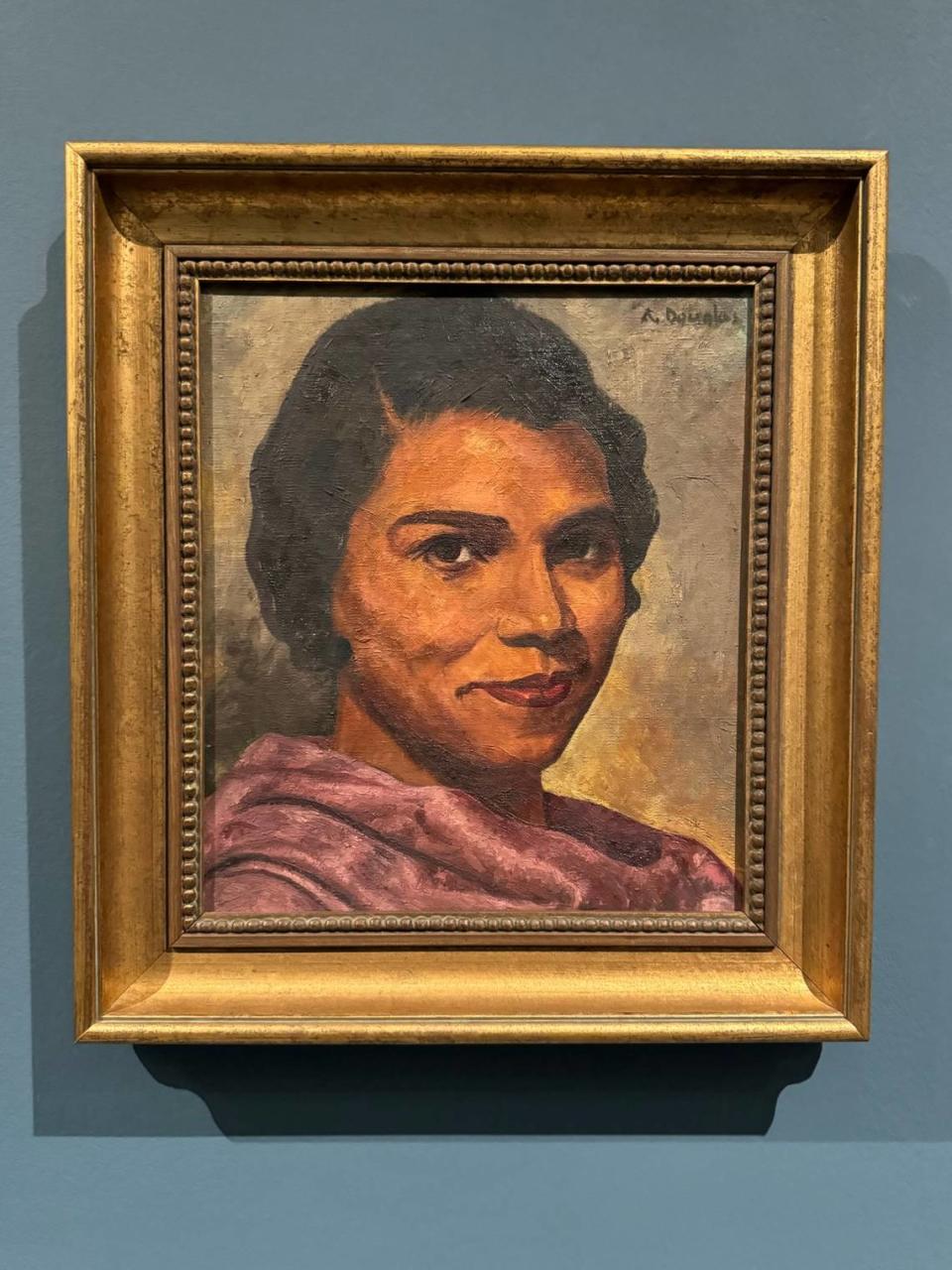
Florida, Harlem and beyond
The Harlem Renaissance stretched far beyond Harlem, Norwood said. He gestured toward a vitrine of ultra rare copies of The Crisis, the official newsletter of the NAACP, the first Black American national news outlet and the oldest Black publication in the world. It was founded and edited by W. E. B. Du Bois.
“The covers of these were a basically a canvas for black artistry,” Norwood said. Artists like Douglas (once again) and Laura Wheeler Waring illustrated magazine covers with the grandeur of movie posters.
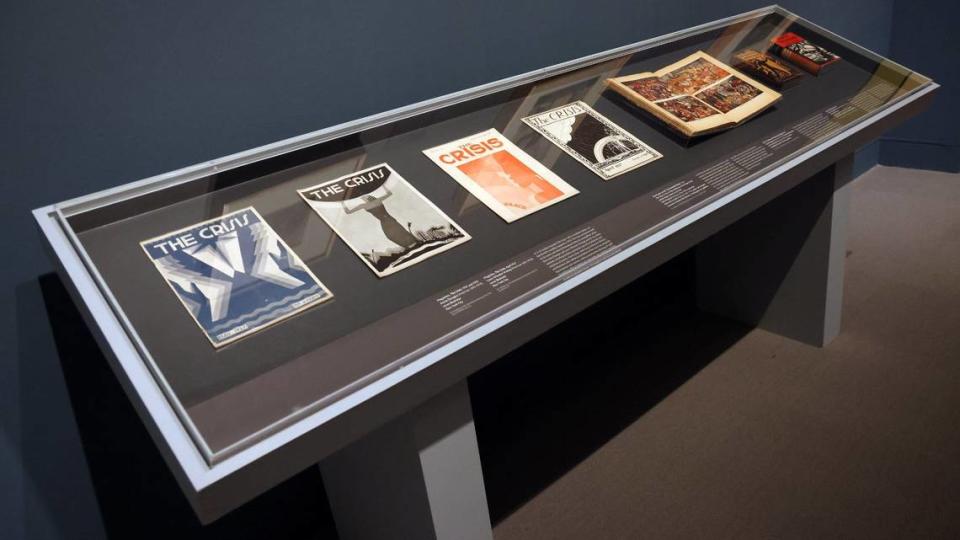
The Crisis was a springboard for Black writers and artists. The publication featured national and international coverage of civil rights and equality issues for a Black American audience to read. Among those issues was Italy’s 1935 invasion of Ethiopia, an African country that has never been colonized. The invasion caused an uproar in African-American communities, with marches in Harlem and Chicago.
A small frame houses a pamphlet that captures this moment in history. It’s an issue of Negro History Week, edited by Carter Godwin Woodson, who originated Black History Month. The James Lesesne Wells illustration, called “Ethiopia Appeals for Justice,” depicts Ethiopian Emperor Haile Selassie, who spent years in exile in England during the invasion. While Selassie was there, an artist created a bust sculpture of him. That sculpture, part of The Wolfsonian collection, is displayed next to the pamphlet.
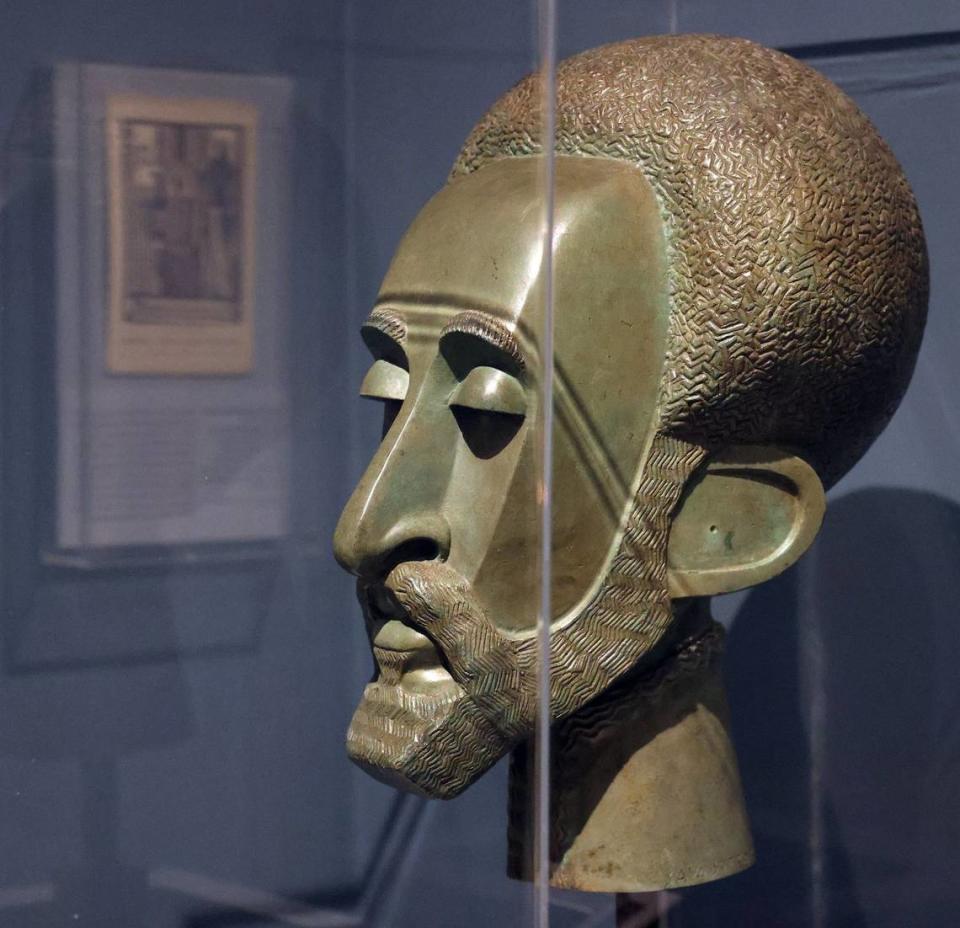
The exhibition ends by paying homage to Floridian artist’s contributions to the Harlem Renaissance. Chief among them is Hurston, an artist who’s memory lingers throughout the show. Raised in Eatonville, Florida, Hurston moved to New York to study at Barnard College. She was an accomplished anthropologist and author of books about Black culture and life in the South, like the classic novel “Their Eyes Were Watching God.”
Despite her achievements, Hurston was underpaid and underappreciated. She died in poverty and was buried in an unmarked grave in 1960. Twelve years later, author Alice Walker uncovered her resting place and created a marker.
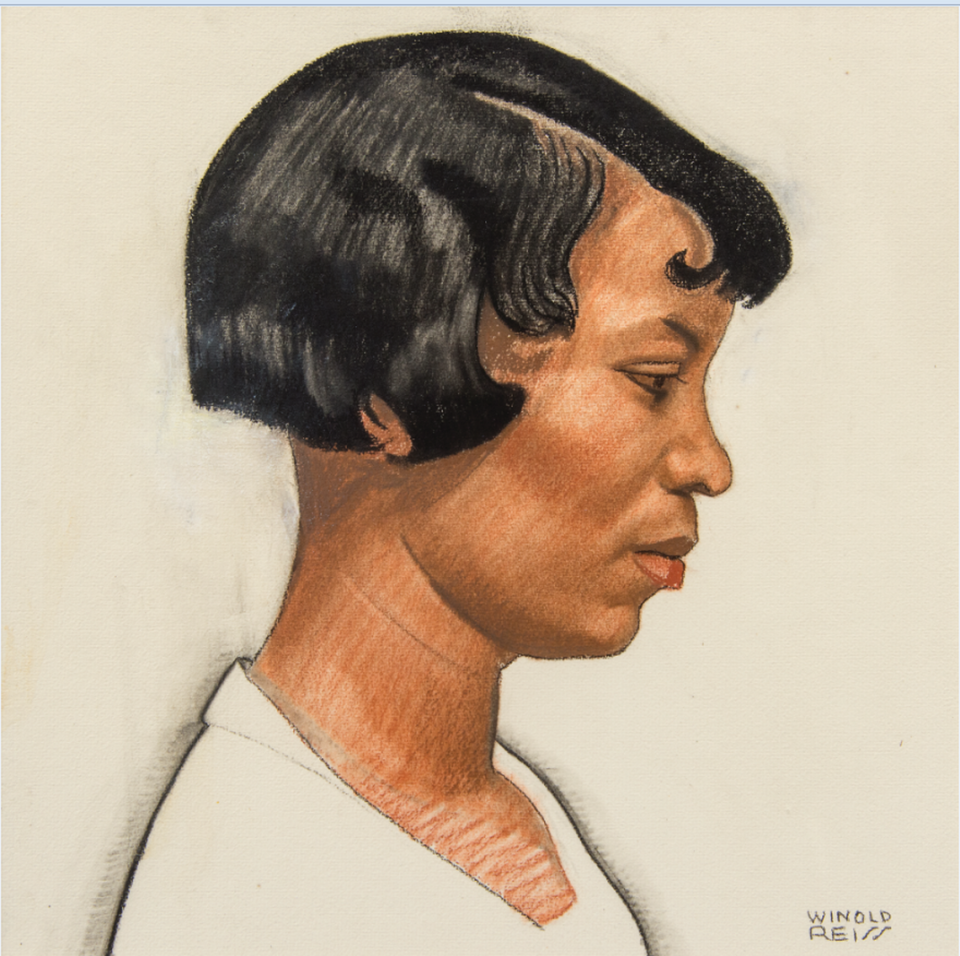
Patricia Feito, a museum visitor and Barry University English professor, marveled at the copies of Hurston’s books in the exhibition. Feito doesn’t visit museums often, but she said she was blown away by “Silhouettes” and the history it represents. It even gave her goosebumps.
“To see it all here in one space and so beautifully curated is, for me, a special moment,” Feito said. “This is seminal for Floridians, largely because there are significant artists, writers, anthropologists who are represented so beautifully in this exhibition that are from Florida and represent a culture in Florida.”
Museums play a role in educating the public on overlooked histories through the art they show and collect, Norwood said. He hopes audiences walk away from the exhibition understanding that the history of Harlem Renaissance was more than singing and dancing. “It touched on so many aspects of life,” he said.
“So often in today’s society, people believe the world began the day they were born. There’s a ambivalence towards knowing history,” he said. “If you don’t know history, how can you ever know if you’re being innovative?”
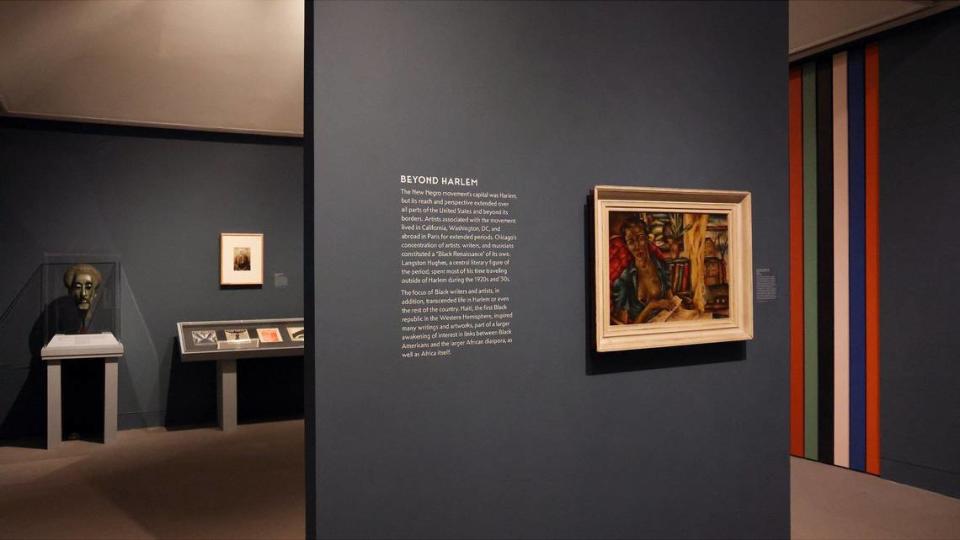
Silhouettes: Image and Word in the Harlem Renaissance
Where: The Wolfsonian–FIU, 1001 Washington Avenue, Miami Beach
When: On view until June 23
Info: Free admission for Florida residents. https://wolfsonian.org/whats-on/exhibitions+installations/2023/11/silhouettes-harlem-renaissance.html
This story was produced with financial support from individuals and Berkowitz Contemporary Arts in partnership with Journalism Funding Partners, as part of an independent journalism fellowship program. The Miami Herald maintains full editorial control of this work.

